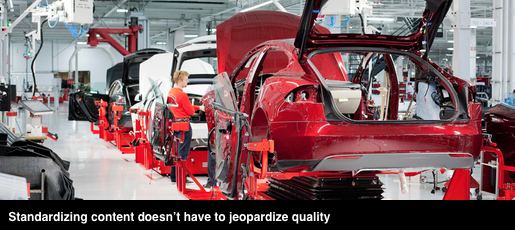Every proposal team looks for ways to reuse proposal content.
We never recommend copying and pasting entire sections, and then searching and replacing the prospect’s name. But between that extreme and writing all content from scratch, there’s plenty of room to use recycled content and still build strong proposals.
In fact, if you use the time saved by standardizing to focus on a prospect’s strategic drivers and hot button issues, you’ll get a stronger proposal than by starting from scratch.
In this post and the next three, we’ll show you how.
RFPs tend to have a lot in common
Consider categories of information required in RFPs (and RFQs etc.) for your business. For example, if you manage infrastructure RFPs, you will typically need plans for mobilization, staffing, operations and maintenance, business continuity, communications reporting, etc.
If your teams bid to design, build, finance, operate and maintain (DBFOM) infrastructure, you’ll need the above plus (at a minimum) design, construction, financing, and governance plans.
Finally, nearly every RFP calls for a corporate profile, details of previous experience and performance and resumes for proposed key individuals.
Some content is better suited to standardization
Successful standardization begins with identifying categories that offer the best possibilities.
Of the sections above, some obviously need to be more RFP-specific than others. At one extreme, your proposed design (or solution) section will need to be highly opportunity-specific. At the other, the corporate profile, project sheets and key individuals’ resumes offer greater room for standardization.
Use structure to standardize project-specific content
Most teams use variations on standard formats for organization charts, resumes and project descriptions.
For plans and proposed approach sections, where content needs to be highly customized, use frameworks and prompts to guide content development. See this post on storyboarding sections for more.
In addition to improving efficiency, pre-built frameworks support consistency and quality. We’ll include more on this in an upcoming post.
Balancing reuse and relevance
Using standard content involves an ongoing balancing act between greater efficiency on the one hand and responsiveness on the other.
In coming posts we’ll help you strike that balance for specific content types.


